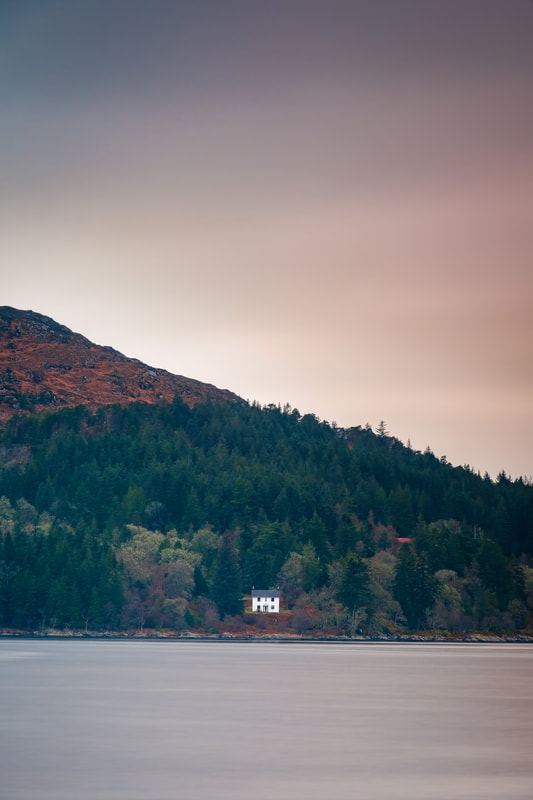|
I don’t know what it is, but I find that my eye is frequently drawn to the sight of a croft house sitting isolated in the landscape here on the Peninsula. It as if each one of these small and rather innocuous buildings has a story to tell and I guess this is why I find them so profoundly captivating. When it comes to a photograph of one, it is certainly true that a picture paints a thousand words. It’s almost as if the image is inviting me to immerse myself in a narrative that intertwines history, culture, nature, and human resilience. The narrative begins with their construction, in a time when the Scottish Highlands was sparsely populated, and life was dictated by the seasons. Back then they would have had sturdy stone walls with rounded corners to help combat the wind and treasured timbers would have supported a thatched roof. The use of locally sourced materials in these parts of the building standing as a testament to the craftsmanship and ingenuity of the crofters who had to live in harmony with their surroundings in order to survive. One can only imagine the challenges faced as the occupants practiced subsistence farming, growing crops like barley, oats and potatoes, and rearing a few cattle and sheep. However, despite the hardships, my sense is that the crofting way of life fostered a strong sense of community and mutual dependence, with the crofters working together during peak times, such as at harvest time and peat cutting. Indeed, the communal working and gatherings at important agricultural milestones would have provided opportunities for celebrating together. So, when I look at these houses, I can almost hear the murmur of voices and the echoes of laughter as the families shared stories and songs that passed from one generation to the next. The landscape surrounding the house is equally integral to its story. Whether it be rolling hillside, open moorland, sand dunes or rocky foreshore, a photograph of a croft house set against a vast and rugged landscape speaks to the symbiotic relationship between the crofters and their environment. It’s a story of respect for nature and one that changes with the seasons.
In spring, the landscape might be carpeted with blossoming wildflowers, symbolising renewal and hope. Summer’s light might cast a red glow across the walls and roof of the house, bringing a sense of warmth and security. Autumn introduces a palette of golds and oranges, a time of harvest and preparation for the winter ahead. Finally, in winter, the house, perhaps dusted with snow, stands as a beacon of warmth and safety amid the stark, cold landscape. Although stone built walls and thatched roofs have been replaced by white rendered walls and slate roofs to give us the croft houses we see today, these buildings still captivate my imagination and permeate a sense of history and heritage. To me, they are more than just structures; they are a living, breathing testament to the resilience of the people who have endured centuries of hardship and adversity to call this rugged landscape home. Such scenes speak to me and tell me a story not just of survival, but one of thriving in harmony with the land, drawing strength from the beauty and harshness of nature and this is perhaps why I find both my eye and my camera drawn to them.
0 Comments
Your comment will be posted after it is approved.
Leave a Reply. |
AuthorHi, Archives
July 2024
Categories
All
|
Steven Marshall Photography, Rockpool House, Resipole, Strontian, Acharacle, PH36 4HX
Telephone: 01967 431 335 | Mobile: 07585 910 058 | Email: [email protected]
Telephone: 01967 431 335 | Mobile: 07585 910 058 | Email: [email protected]
All Images & Text Copyright © 2024 - Steven Marshall - All Rights Reserved




